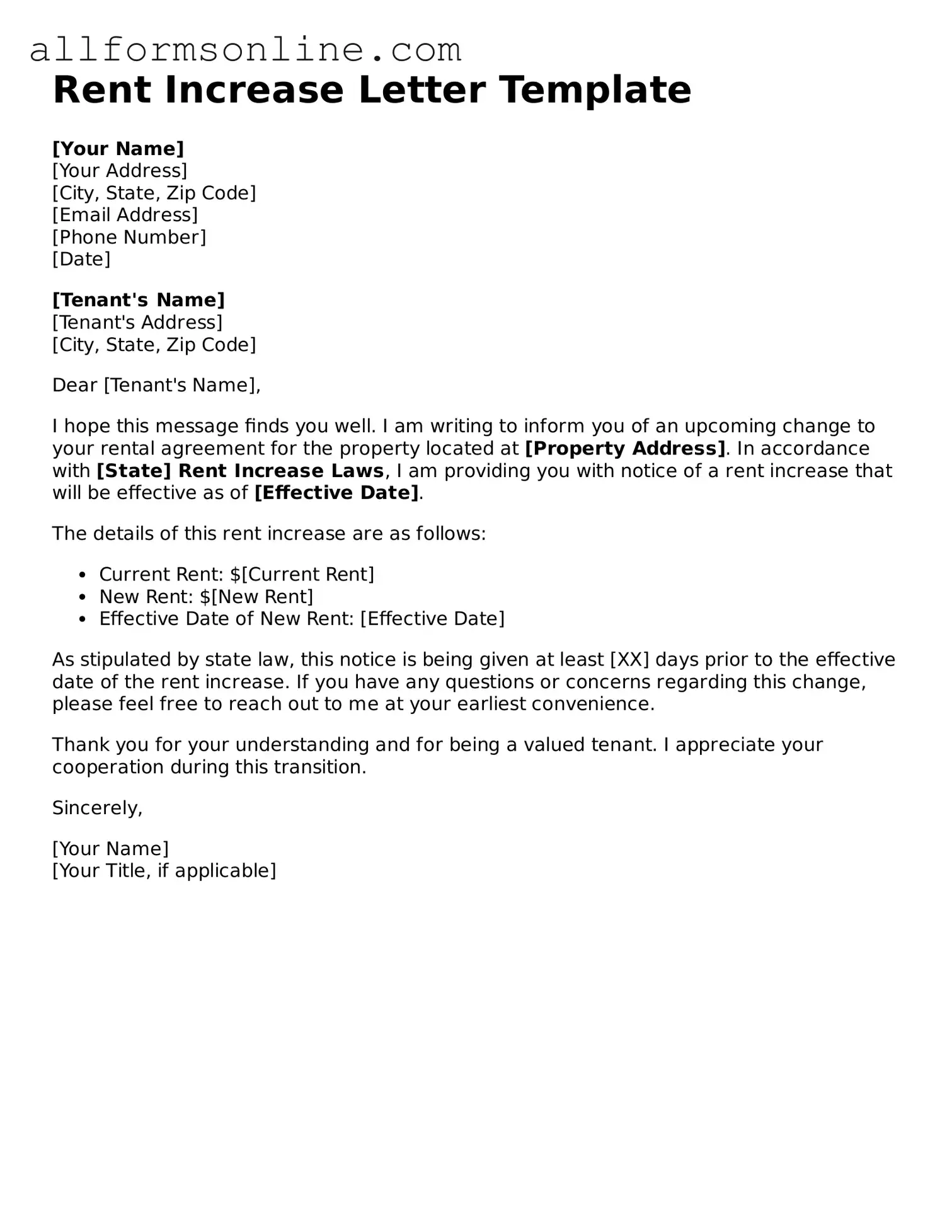What is a Rent Increase Letter?
A Rent Increase Letter is a formal document that a landlord uses to notify tenants about an upcoming increase in rent. This letter outlines the new rental amount, the effective date of the increase, and any other relevant details. It serves as an official record of the change and helps ensure that both parties are aware of the new terms of the rental agreement.
When should I send a Rent Increase Letter?
Timing is crucial when sending a Rent Increase Letter. It's generally recommended to provide notice at least 30 days before the new rent takes effect. However, some states have specific laws that dictate how much notice must be given, so it's important to check your local regulations. Sending the letter well in advance allows tenants to prepare for the change.
What information should be included in the letter?
Include the following key details in your Rent Increase Letter: the current rent amount, the new rent amount, the effective date of the increase, and any specific reasons for the increase if applicable. Additionally, it’s a good idea to mention any improvements or changes to the property that justify the increase, as this can help tenants understand the rationale behind the decision.
Can I increase the rent as much as I want?
No, landlords cannot increase rent arbitrarily. Many states have rent control laws that limit how much rent can be raised and how often. Even in areas without rent control, landlords should consider the local market rates and ensure that any increase is reasonable. It's advisable to research comparable rental prices in the area to ensure the increase is justified.
What if a tenant refuses to accept the rent increase?
If a tenant refuses to accept the rent increase, they may choose to move out when their lease expires. It’s important to handle the situation professionally. Discuss the increase with the tenant, and be open to negotiation if possible. If an agreement cannot be reached, follow the legal process for ending the tenancy, which varies by state.
Is a Rent Increase Letter legally required?
While it may not be legally required in all jurisdictions, sending a Rent Increase Letter is a best practice. It provides clear communication and documentation of the change. In many states, landlords must provide written notice of rent increases to comply with local laws. Always check your state’s requirements to ensure compliance.
What should I do if I have more questions about the Rent Increase Letter?
If you have further questions or need assistance, consider consulting a local attorney or a property management professional. They can provide guidance tailored to your specific situation and help you navigate any complexities related to rent increases and tenant rights.
